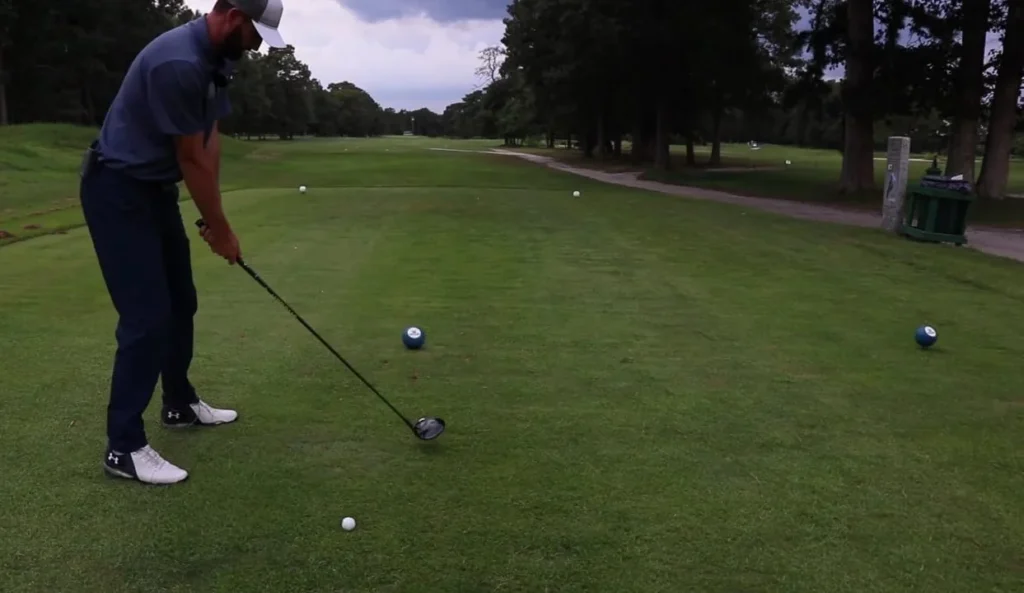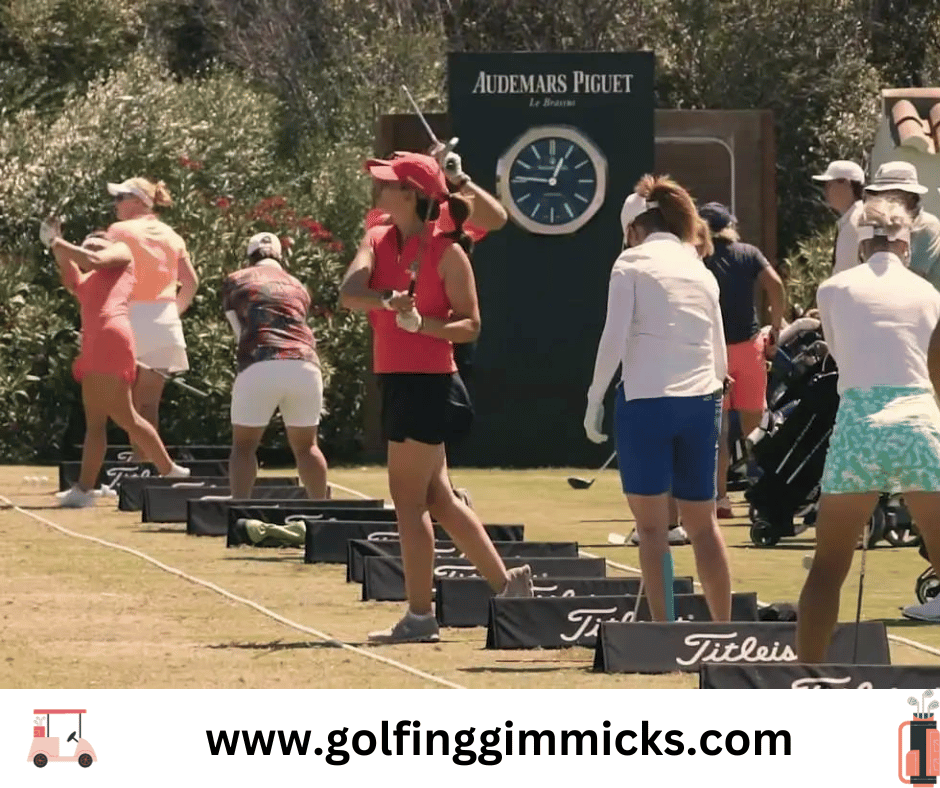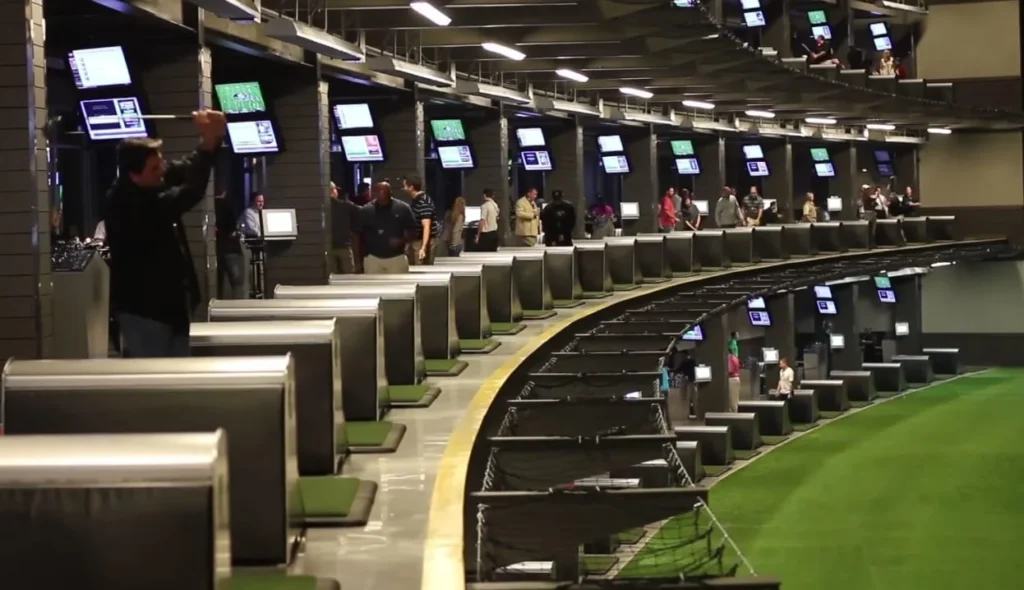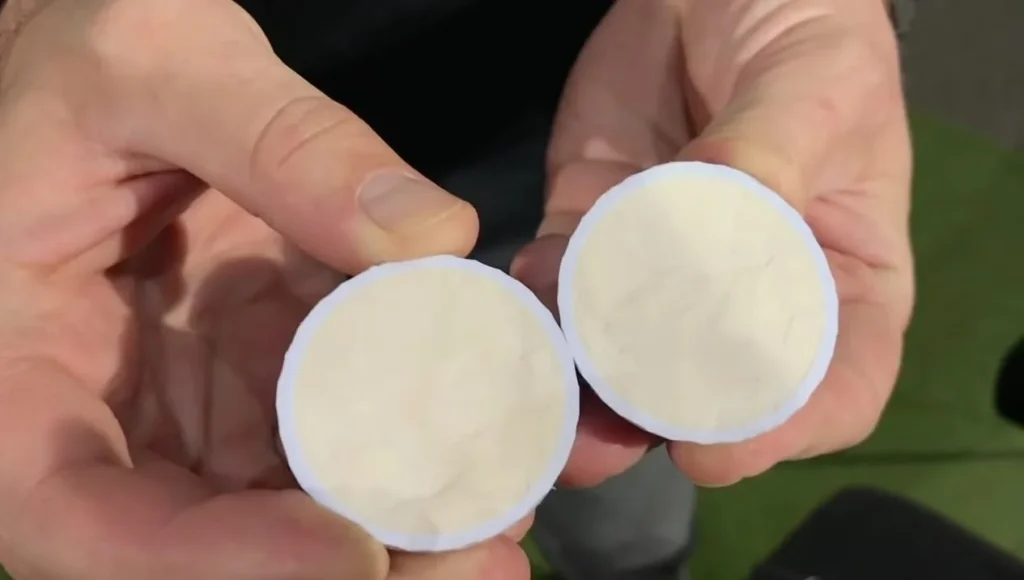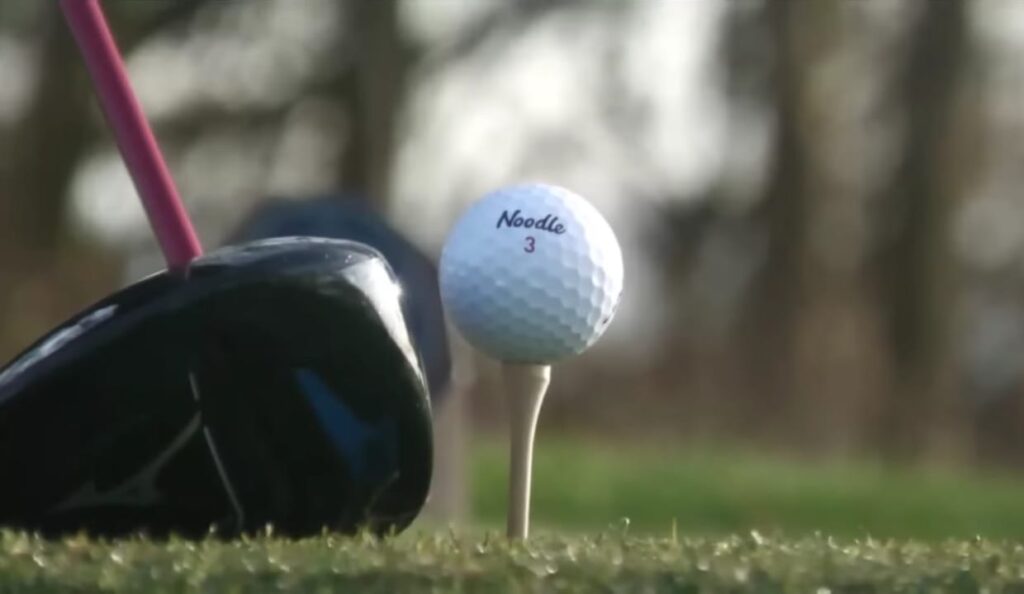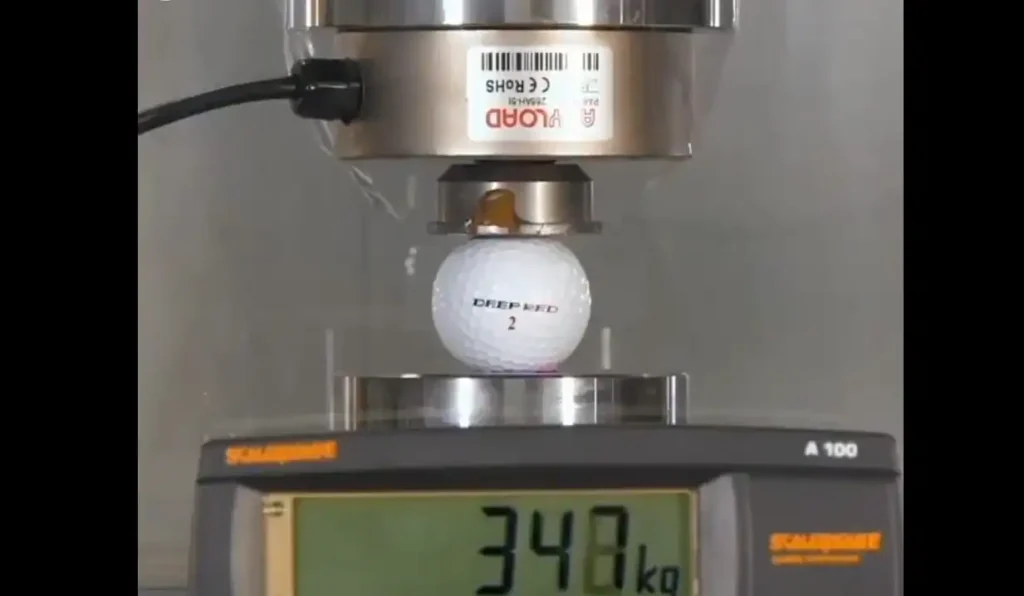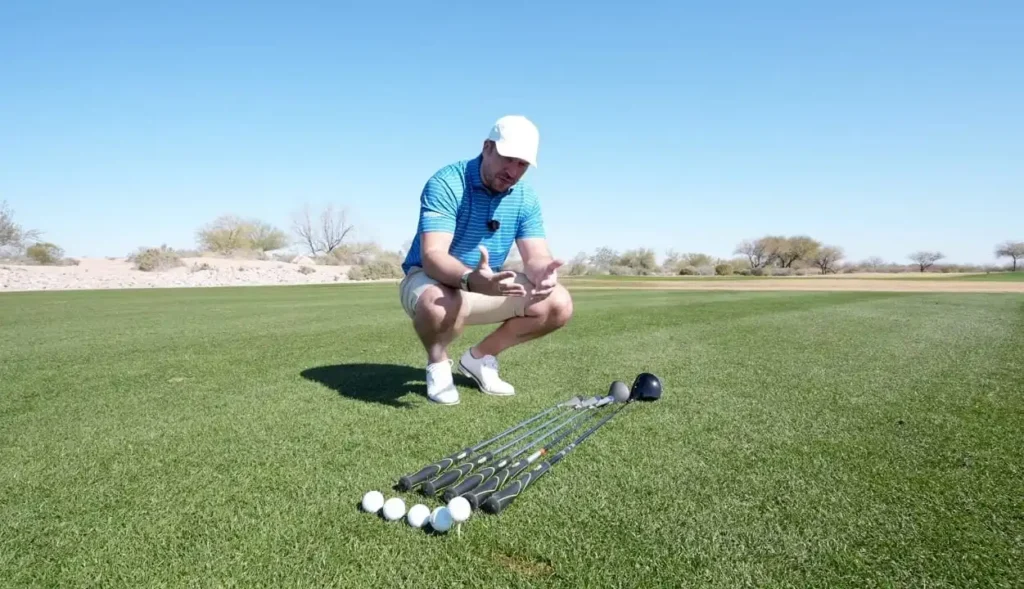Step up to the tee box, where the journey of every golf shot begins and the anticipation of every swing thrives. Teeing a golf ball might seem like a simple act, but within its subtleties lies the potential to shape your entire round. Welcome to the ultimate guide on mastering the art of teeing off – a journey where precision meets power, and where every placement of the ball holds the promise of greatness.
From understanding the rules to unlocking the secrets of optimal tee height, join us as we delve deep into the realm of tee box etiquette and strategy. Get ready to tee it high and let it fly, because in golf, the journey from the tee box sets the stage for the adventure that awaits. Let’s unveil the secrets of tee box rules to help you become a better golfer.
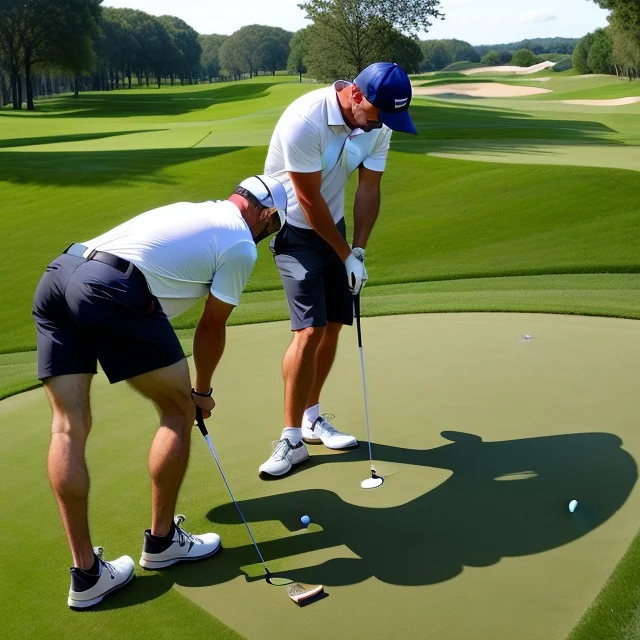
Understanding Re-Teeing Scenarios
Let’s go through some scenarios in which re-teeing happens. If you are interested in teeing a golf ball, you should be aware of these simple rules here. These tee box rules are necessary to understand if you wish to improve your re-teeing game.
If you wish to read these rules of golf on your own, click on the blue link.
1. Ball Falls off Tee
Rule 6.2b(6) in Action
Rule 6.2b(6) protects players who make near-whiff shots that end up landing within their teeing area. In such a situation, you have the freedom to lift or move it without incurring penalties. You do that to retee and play your second shot from within its designated box without having to face any embarrassment from mishits.
2. Out of Bounds or Lost Ball
Stroke and Distance Rule
When your ball goes haywire on the course and goes out-of-bounds or gets lost, the Stroke and Distance Rule applies, meaning a penalty stroke must be taken before reteeing for your third shot. Being aware of this rule can save time and frustration on the course. That’s how teeing a golf ball can be made possibly without any repercussions.
3. Hazard Dilemmas
Options for Relief
As your ball encounters hazards marked with red or yellow stakes, knowing your relief options is paramount to the successful navigation of hazards. This guide offers four such solutions from playing it where it lies to making use of designated drop zones to navigating hazards efficiently. So, know all these tee box rules if you wish to avoid dilemmas and improve your game.
4. Unplayable Lie
Rule 13.1d for Unplayable Situations
Can you re-tee on the tee box? Let’s read another rule here. Assuming you don’t play by Rule 13.1, encountering an unplayable lie doesn’t have to change the game dramatically; Rule 13.1d allows for declaring it unplayable, taking a penalty, and teeing from either your original spot or an alternative drop point within your teeing area.
Expert Insights for Rule Mastery
So, what’s the penalty for teeing off in front of markers? In this section, we’ll look at some more tee box rules. Again, you can always check out these rules on your own. Plenty of websites are hosting these important rules and helping golfers learn how teeing a golf ball can be made very easily possible. So, here are some expert insights for rule mastery to behold.
1. Utilizing Rule 6.2b(6)
PGA Tour Pro Tactics
Professional golfers use Rule 6.2b(6) to their advantage. You gotta make use of their strategies so you can confidently retee your ball without incurring penalties, turning potential setbacks into opportunities for improvement. It seems that teeing a golf ball isn’t that hard, doesn’t it?
2. Navigating Hazards Like a Pro
Pro Tips for Hazard Management
Gain insights from experienced golfers on how to avoid hazards effectively on the course. From using drop zones or considering red or yellow stakes, their advice ensures you make informed decisions during play. These tee box rules will help you become a much better golfer.

Unveiling the Three Off the Tee Rule
Definition and Scope
When faced with challenges off of the tee box that requires a restart of the hole, golfers often turn to the “Three Off the Tee” rule to restart it again (also known as the 3-3 rule). After two unsuccessful attempts at initiating the hole from the tee, this rule forces the golfer into taking a third shot from that particular tee position to start it correctly.
Scenarios Triggering the Rule
Let’s review some scenarios that employ tee box rules:
1. Out of Bounds Dilemma: Addressing Shots Beyond Course Boundaries
“Three Off the Tee” refers to when an out-of-bounds scenario necessitates three shots before taking another attempt tee shot to ensure compliance with both stroke and distance penalties. When this rule kicks in, often two additional tee shots must be attempted before hitting “Three Off.”
2. Lost Ball Predicament: The Search Conundrum
“Three Off the Tee” rules provide a structured method for recovering lost golf balls when golfers encounter difficulty. After an allotted search time has elapsed, taking another shot off of the tee becomes mandatory to continue searching and recover the ball.
3. Hazard Challenges: Dealing with Water and Bunker Complications
Hitting into hazards marked with red or yellow stakes may trigger the “Three Off the Tee” rule, so understanding relief options and strategically approaching hazardous scenarios are critical to reducing the multiple tee shots needed for success.
Leveraging the Incident for Advantage
How to make use of all these tee box rules in another situation? Here is how you can leverage the incident to your advantage. Find out how teeing a golf ball can make it all better.
1. Maintaining Composure
Turning Setbacks into Opportunities
Accidents on the golf course can be mentally taxing, yet staying calm is crucial to staying competitive. Thus, treat each incident as an opportunity to regroup and reset to maximize performance and minimize mistakes going forward.
2. Strategic Tee Adjustment
Optimizing Tee Height and Placement
Utilizing their knowledge gained from accidental knock-offs, golfers can utilize accidental mishits as opportunities to optimize tee height and placement, therefore, creating positive impacts that lead to improved shots overall and boost tee performance.

Step-by-Step Guide to Taking Free Relief
Let’s make teeing a golf ball even easier. Here’s a step-by-step guide to help you understand it better.
1. Identifying the Nearest Point of Relief
The Starting Point
The player must find the nearest point without interference from abnormal conditions; this serves as their point of reference when taking subsequent actions.
2. One Club-Length from the Reference Point
Establishing the Relief Area
Under one club length from an identified point of relief, players can establish the relief area that will act as the zone in which balls can be dropped.
3. No Closer to the Hole
Ensuring Fair Progress
Players using relief areas must ensure the ball lands no closer to the hole than its original position to maintain fairness and prevent unfair advantages from accruing. This rule ensures everyone benefits equally and avoids unfair advantages for themselves or any competitor.
Conclusion
So, what do we understand about teeing a golf ball? Place the ball in the middle of your palm. Put a “T” in the middle of two fingers, between your index and middle finger. Squeeze the “T” with your fingers. Put force down on the ball to push the “T” up and perpendicular to the ground. Let go of the ball. That’s how you can tee up a golf ball properly.
Here are some tips for teeing a golf ball. If the ground is hard, use both hands to push the “T” down. If you have weak wrists, use both hands. Tee the ball high and in the front of your stance. Aim your feet directly at the ball with your feet together. Take a wide step to the side with your rear foot. Use both your hands to do it. Bend down with both knees. Use a little bit of a wiggle to get it in. Hopefully, you can now use tee box rules to your advantage. If you want to know how to tee up a golf ball then please read our previous article. Do share Golfing Gimmicks articles with your golfing buddies and share your opinions in the comment section.
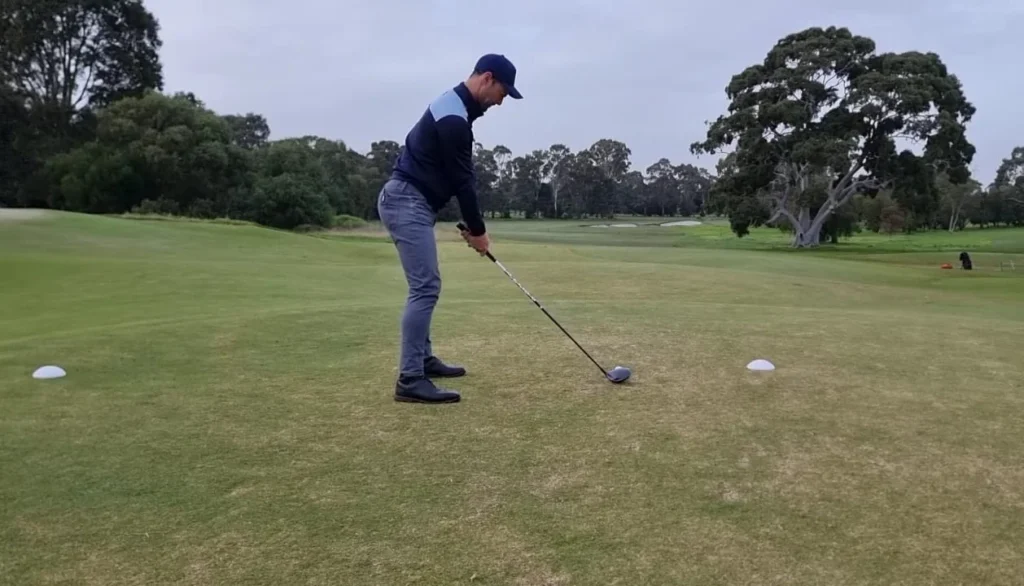
FAQs – Teeing a Golf Ball Properly
How Many Strokes Is a ‘Retee’?
Reteeing usually adds one additional stroke in golf. Now, when players execute shots that remain within the teeing area after hitting them, prompting a strategic decision to retee for optimal positioning of their shots.
Can You Flatten the Grass Behind Your Golf Ball?
According to one of the core rules of golf “Play It As It Lies,” flattening grass behind your golf ball is prohibited and must remain as is without alteration to the course or attempts at flattening. Any attempts at this may incur penalties in line with fair play principles and core values of this sport.
How to Take Free Relief in Golf?
Golf’s process for taking free relief involves following several specific steps when abnormal course conditions interrupt normal play. Players should locate where interference ceases and drop their ball within one club length of that point, taking care to not land closer than intended to any hole before. Free relief is generally allowed except where penalties exist.
What Happens If Your Tee Shot Doesn’t Leave the Tee Box?
Golfers still retain an option for reteeing without penalty if their initial tee shot fails to leave the tee box, with this forgiving provision taking into account that accidents sometimes happen and giving players time to prepare themselves for another successful attempt at starting their rounds.
What Happens If You Accidentally Knock the Ball off the Tee?
Accidentally knocking the ball off its tee during practice swings will not incur penalties or additional strokes; golfers simply retee and carry on as usual, without incurring penalties due to errors during warmup swings that don’t impact overall scoring.
What is the 3-3 Rule?
When golfers encounter problems such as hitting an out-of-bounds tee shot or misplacing the ball, they take three penalty strokes before taking three further tee shots before renting for their third shot. Knowledge and application of this rule provide effective strategic decision-making during rounds of golf.

